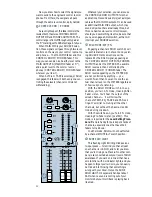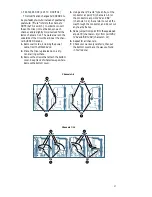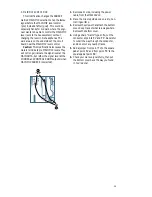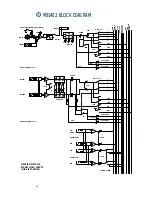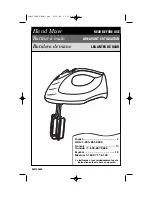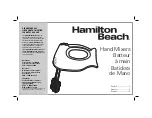
36
condenser
Another term for the electronic component
generally known as a capacitor. In audio,
condenser usually refers to a type of micro-
phone that uses a capacitor as the sound
pickup element. Condenser microphones
require electrical power to run internal ampli-
fiers and maintain an electrical charge on the
capacitor. They are typically powered by inter-
nal batteries or “phantom power” supplied by
an external source, such as a mixing console.
console
A term for a sound mixer, usually a large
desk-like mixer.
cueing
In broadcast, stage and post-production
work, to “cue up” a sound source (a record, a
sound effect on a CD, a song on a tape) means
to get it ready for playback by making sure you
are in the right position on the “cue,” making
sure the level and EQ are all set properly. This
requires a special monitoring circuit that only
the mixing engineer hears. It does not go out
on the air or to the main mixing buses. This
“cueing” circuit is the same as pre-fader (PFL)
solo on a Mackie mixer, and often the terms
are interchangeable.
dB
See
decibel
dBm
A unit of measurement of audio signal level
in an electrical circuit, expressed in decibels
referenced to 1 milliwatt. The “m” in dBm
stands for “milliwatt.” In a circuit with an im-
pedance of 600 ohms, this reference (0dBm)
corresponds to a signal voltage of 0.775 VRMS
(because 0.775 V across 600 ohms equals
1mw).
dBu
A unit of measurement of audio signal level
in an electrical circuit, expressed in decibels
referenced to 0.775 VRMS into any impedance.
Commonly used to describe signal levels
within a modern audio system.
dBv
A unit of measurement equal to the dBu but
no longer in use. It was too easy to confuse a
dBv with a dBV, to which it is not equivalent.
dBV
A unit of measurement of audio signal level
in an electrical circuit, expressed in decibels
referenced to 1 VRMS across any impedance.
Commonly used to describe signal levels in
consumer equipment. To convert dBV to dBu,
add 2.2dB.
decibel (dB)
The dB is a ratio of quantities measured in
similar terms using a logarithmic scale. Many
audio system parameters measure over such a
large range of values that the dB is used to
simplify the numbers. A ratio of
1000V:1V=60dB. When one of the terms in the
ratio is an agreed upon standard value such as
0.775V, 1V or 1mw, the ratio becomes an abso-
lute value, i.e., +4dBu, –10dBV or 0dBm.
delay
In sound work, delay usually refers to an
electronic circuit or effects unit whose pur-
pose it is to delay the audio signal for some
short period of time. Delay can refer to one
short repeat, a series of repeats or the complex
interactions of delay used in chorusing or re-
verb. When delayed signals are mixed back
with the original sound, a great number of
audio effects can be generated, including phas-
ing and flanging, doubling, Haas-effect
positioning, slap or slapback, echo, regenera-
tive echo, chorusing and hall-like
reverberation. Signal time delay is central to
many audio effects units.
detent
A point of slight physical resistance (a click-
stop) in the travel of a knob or slide control,
used in Mackie mixers to indicate unity gain.
dipping
The opposite of peaking, of course. A dip is
an EQ curve that looks like a valley, or a dip.
Dipping with an equalizer reduces a band of
frequencies. (See guacamole.)
doubling
A delay effect, where the original signal is
mixed with a medium (20 to 50 msec) delay.
When used carefully, this effect can simulate
double-tracking (recording a voice or instru-
ment twice).
dry
Usually means without reverberation, or
without some other applied effect like delay or
chorusing. Dry is not wet, i.e. totally unaffected.

